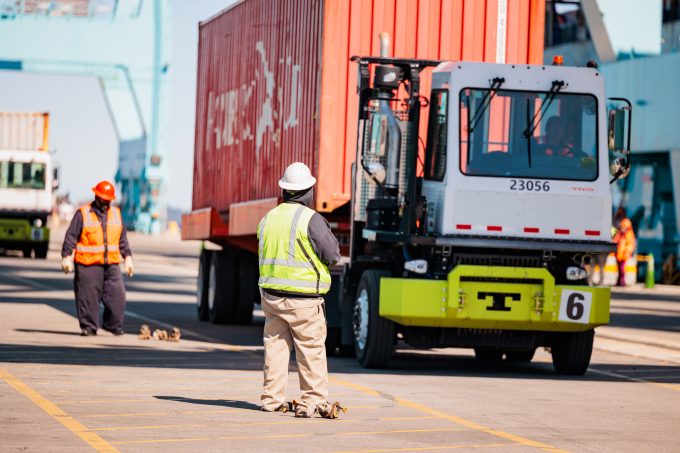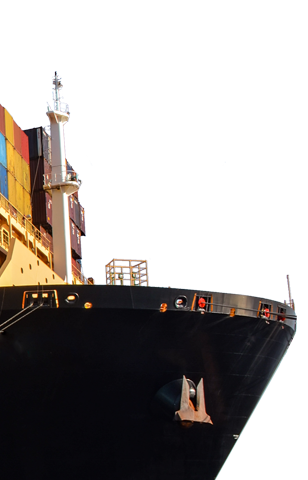5 steps for importers to consider when developing a documentation checklist
- Home
- >
- Cargo Blog
- >
- 5 steps for importers to consider when developing a documentation checklist


Written by – Marcia Pledger
From produce and clothing to car parts and medical supplies, nearly everything we use in our daily lives is transported, but that doesn’t mean it is easy for companies to get goods to consumers. When it comes to importing and exporting international shipments, proper documents make the difference between delays and a seamless supply chain.
To maintain cargo velocity, importers and exporters are encouraged to become familiar with applicable laws and regulations.
Benefits of a Foreign Trade Zone
Justin Ryan, JAXPORT’s Foreign Trade Zone (FTZ) manager, said there are ways for mid-size companies to simplify the complex process of managing and verifying all necessary documents for international shipping.
He said the most common topic of conversation he has with U.S.-based importers and manufacturers is opportunities to improve cost competitiveness in an extremely competitive global marketplace.
“My role, along with JAXPORT’s sales team, is to facilitate global trade through the port for companies, whether that is simplifying the process of doing business or identifying opportunities to leverage our deepwater capabilities, logistical efficiencies, and proximity to a vast consumer market,” Ryan said.
A substantial part of the U.S. Foreign Trade Zone Program he administers for Foreign Trade Zone No. 64 provides the opportunity to optimize importers’ and manufacturers’ supply chains and minimize a product’s landed costs while encouraging investment in U.S. jobs.
Using the U.S. Foreign-Trade Zones (FTZ) Program and Foreign Trade Zone No. 64 offers several benefits to importers that enhance their competitiveness and operational efficiency.
FTZs offer flexibility in terms of storage, processing, and distribution of goods, allowing importers to adapt more easily to changing market conditions and customer demands, Ryan said.
Companies operating with an FTZ designation have the ability to take advantage of streamlined U.S. Customs procedures, reducing delays and enhancing supply chain efficiency.
“This can lead to quicker turnaround times and more reliable delivery schedules,” he said.
Understanding the process
Shipments over $2,500 undergo a formal entry process with U.S. Customs and Border Protection, requiring a Customs bond and a detailed clearance process. Shipments valued up to $2,500 generally have a simpler clearance process, although a U.S. Customs bond may still be required for certain goods. But generally, most mid-size companies will be shipping items with higher values.
It’s the reason companies often hire Customs brokers who submit information electronically, but also engage with the U.S. Customs and Border Protection (CBP) by phone, email, or through the online data exchange.
David Dilland, Chief CBP Officer at the Area Port of Jacksonville, said the overall goal for his agency is to protect American consumers from harmful and counterfeit imports by ensuring the goods that enter the U.S. marketplace are genuine, safe, and lawfully sourced.
Five steps from CBP Jacksonville’s Dave Dilland for developing an import checklist
1. To import through Jacksonville, go to CBP.gov and find the list of brokers at the Port of Entry that includes JAXPORT.
“We can’t make recommendations to companies, but you will find a list of brokers that serve JAXPORT,” Dilland said.
2. Know what you’re importing and where it came from. It’s important to know where it’s sourced to ensure legitimacy and if there are any intellectual property, trademarks or copyrights.
“Any major brand is going to be registered with the CBP. You can search CBP’s website for intellectual property rights records. Companies need to know what they’re importing, because we’re here to protect the general public and consumers.”
3. Ensure all data is accurate. Data integrity is important.
“A huge push for us is to make sure that what is presented to us is actually in the container or box. We’re going to verify it to make sure that what is being imported matches the paperwork.”
4. Know if a license is required by another government agency such as the U.S. Food and Drug Administration, the Department of Transportation, or the Environmental Protection Agency.
“There’s more than 40 federal agencies whose laws we enforce. Whether you’re bringing in a used car, beauty products or electronics, it’s really important to get out front with any important information by engaging with agencies early.”
5. Ensure all manifest or cargo documents are in place.
“At a very basic level we need you to tell us who is importing goods, who it came from, the value, weight, and amount by certain timelines, whether it’s by sea, aircraft, rail, or a truck,” Dilland said. “The manifest is the first thing that we see, regardless of the mode of transport. Carriers get it either from a broker or an individual. It may be a perception that a broker is going to do all of the work, but if there’s an issue, it ultimately falls on the importing company, so it’s best to get ahead of it.”
